The 14 Biggest Dangers to Your Pets During the Holidays
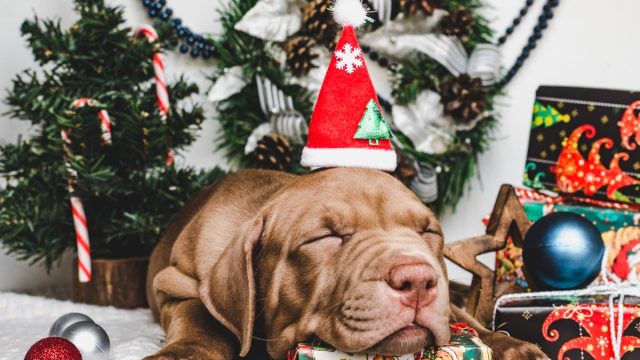
The holidays are a time of family gatherings, good cheer, and unfortunately for many pet owners, emergency trips to the veterinary hospital. That’s right, while there is a lot to love about all the winter festivities December holds, there are also some surprising risks that the season presents to the furriest members of our households. Thanks to all of those enticing decorations and tons of guests stopping by, unfortunately, some of the things—and people—that add joy to our celebrations put our beloved dogs and cats in danger. To make sure you’re looking out for Fido and Fancy this December, here are 14 of the most important risks to consider when it comes to your pet’s safety during the holidays.
1
Chocolates
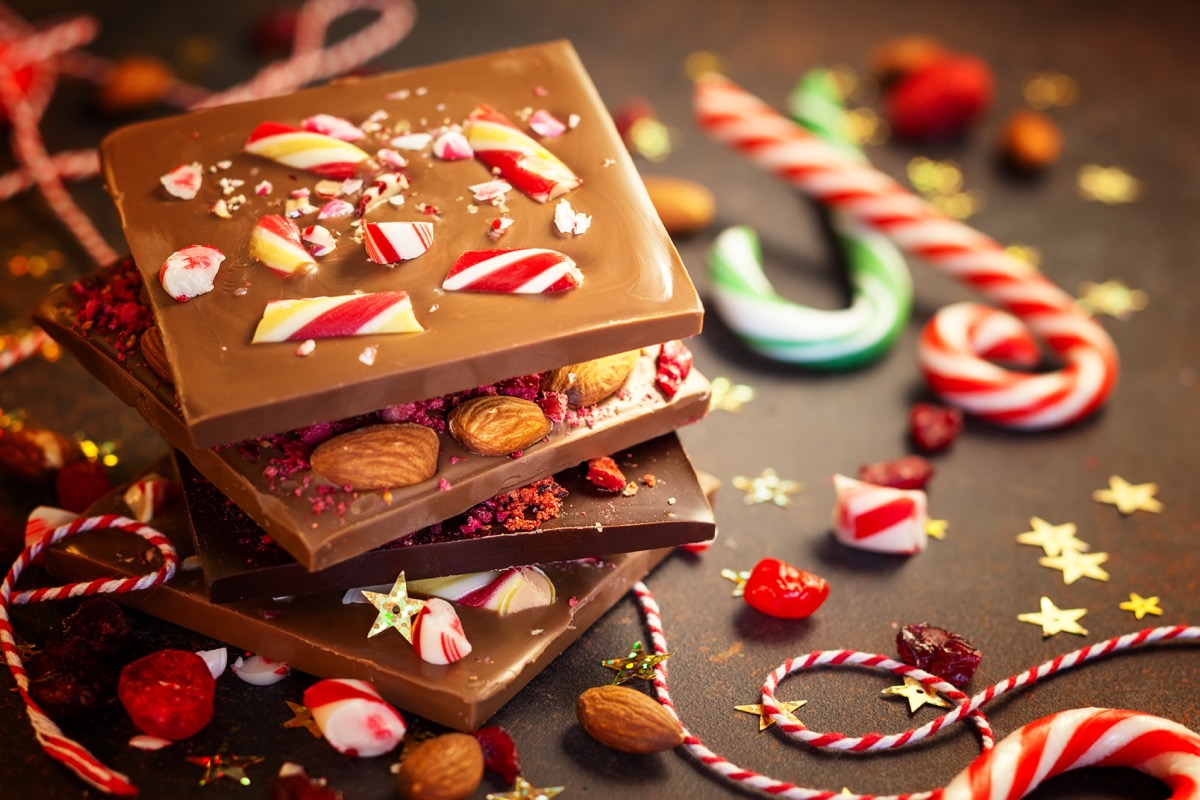
If you’re a dog owner, you probably already know that as little as four ounces of chocolate can be deadly to your pup. And though most dog owners are vigilant about keeping the sweets out of their canine companion’s reach, when they get a wrapped gift from a friend or coworker, it’s likely they just toss it under the tree without thinking twice.
“May sound obvious, but chocolate is even more prevalent during the holidays, whether it’s in baked goods or given as a gift,” says Chris Boicelli, media director for Preventive Vet. “It’s important to be aware of any gifts containing chocolate that are placed under the tree.”
2
Xylitol
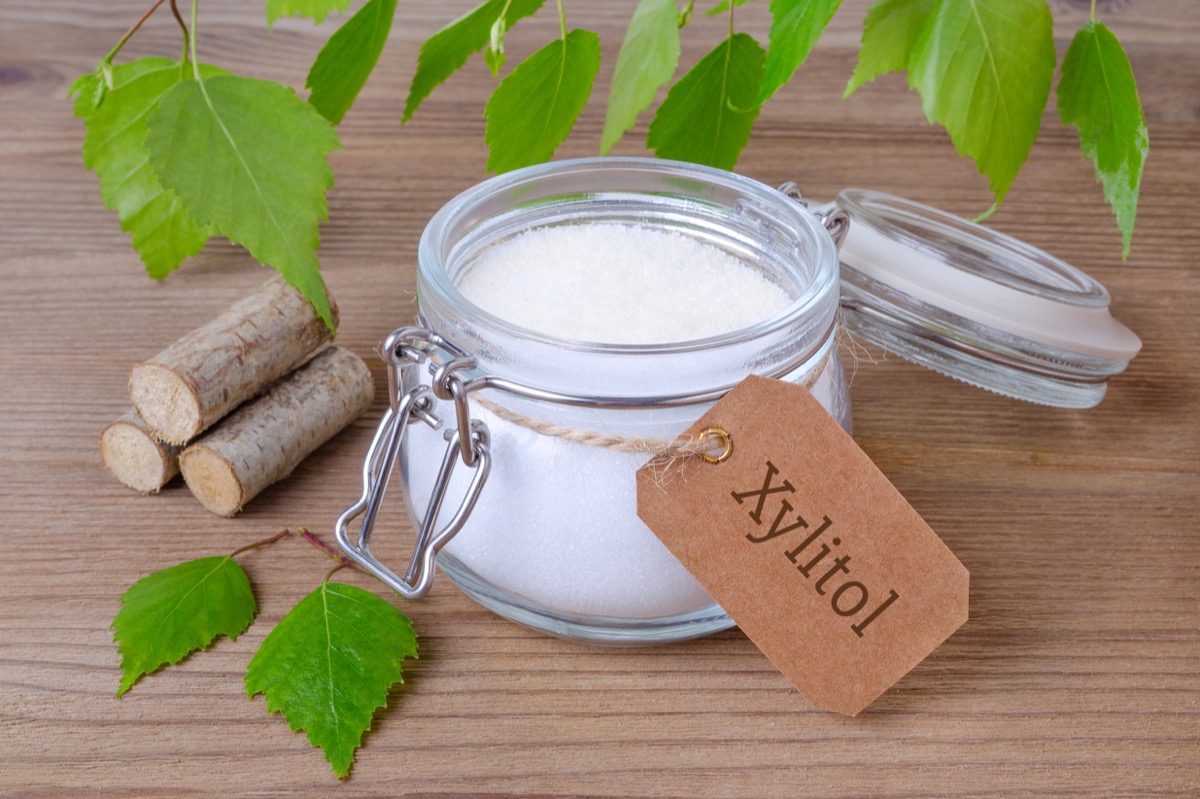
This substance, often used as a sugar substitute, is also found in cough syrup, candies, and breath mints. And it’s also extremely toxic to dogs. “Many people bake over the holidays, and this ‘all natural’ sugar substitute that’s fine for people is extremely poisonous to dogs and poisons thousands of dogs each year,” Boicelli explains, pointing to Preventive Vet’s detailed description of Xylitol’s dangers for dogs.
It’s the sort of thing that an owner is likely very careful about most of the year, but with guests, the chances of products containing xylitol getting left around increases.
3
Table scraps
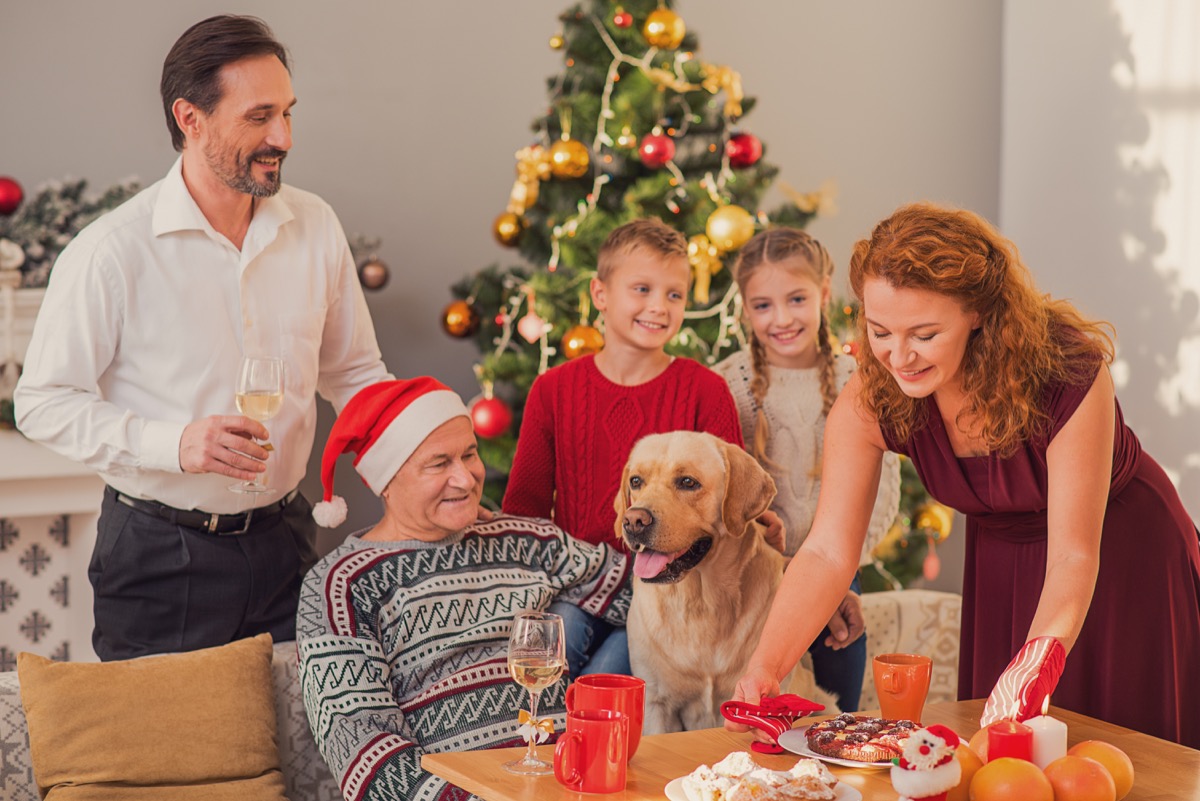
Big feasts mean serious table scraps for pets. According to a recent survey from pet food brand ACANA, conducted in partnership with Atomik Research, nearly half (48 percent) of pet owners let their dog eat scraps from their plate during special occasions like Thanksgiving and Christmas. But “while some people food is safe as a treat in moderation, large amounts can make your pet ill,” says Stephanie Mantilla, a positive-reinforcement-based animal trainer at Curiosity Trained.
Even if you have a no-begging policy, some of your friends or family visiting might find it harder to resist slipping your pet a little something from their plate (or your pet may take things into their own paws and jump up on the counter when you’re distracted, helping themselves). “With the hustle of holidays, it’s easy for you not to be aware of how many table scraps your pet is actually eating,” Mantilla says. “Some scraps, such as cooked bones, are downright dangerous since they can splinter and cause internal perforations.”
There are plenty of other dietary dangers for dogs, too. Onions and garlic can cause gastrointestinal irritation and red-blood-cell damage. Nuts like almonds and pecans can lead to vomiting and diarrhea. Food or drinks containing alcohol can create difficulty breathing and even death. Review this list by the ASPCA and be careful about leaving any human food out or accessible to your dog—it could be a matter of life or death.
4
Guest medications
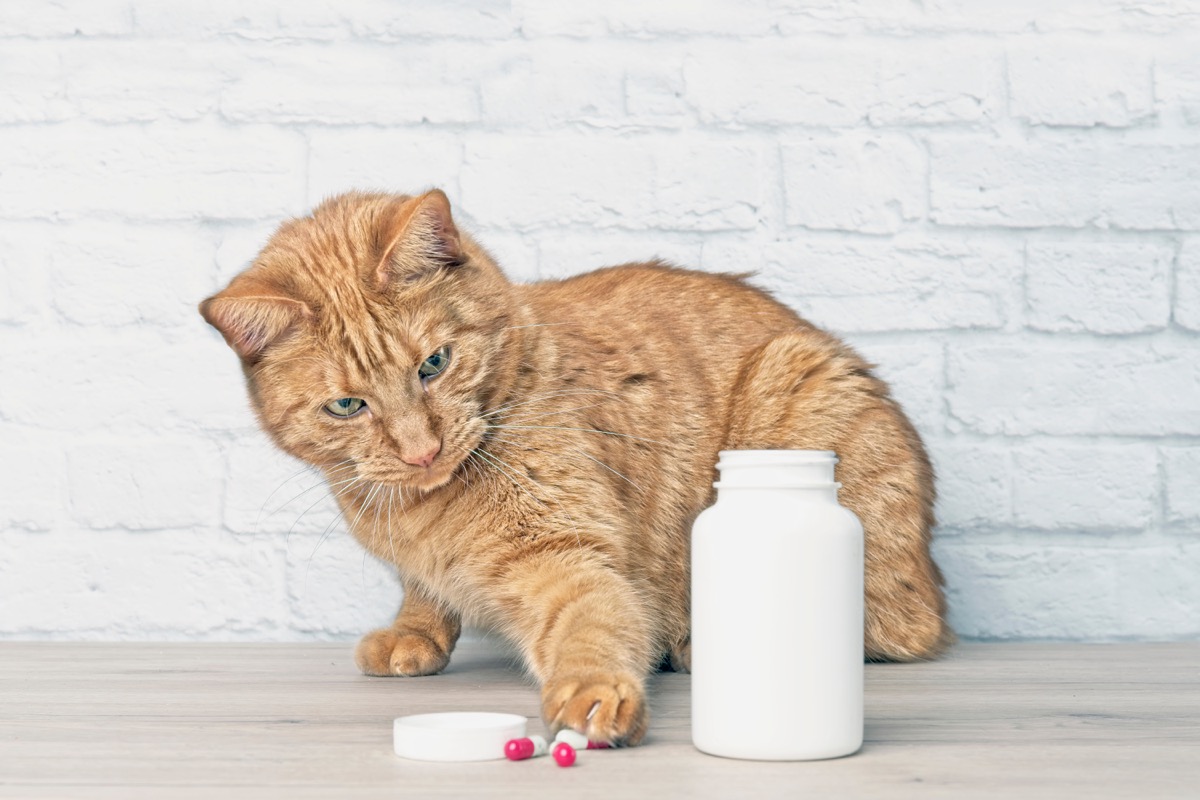
You might be careful about keeping your medications tucked away in the cabinet well out of your pet’s reach, but if you have guests over, they may be a bit less cautious when setting out their medicine, creating a prime opportunity for a hungry dog or cat to gobble up something they really shouldn’t ingest.
5
Stress
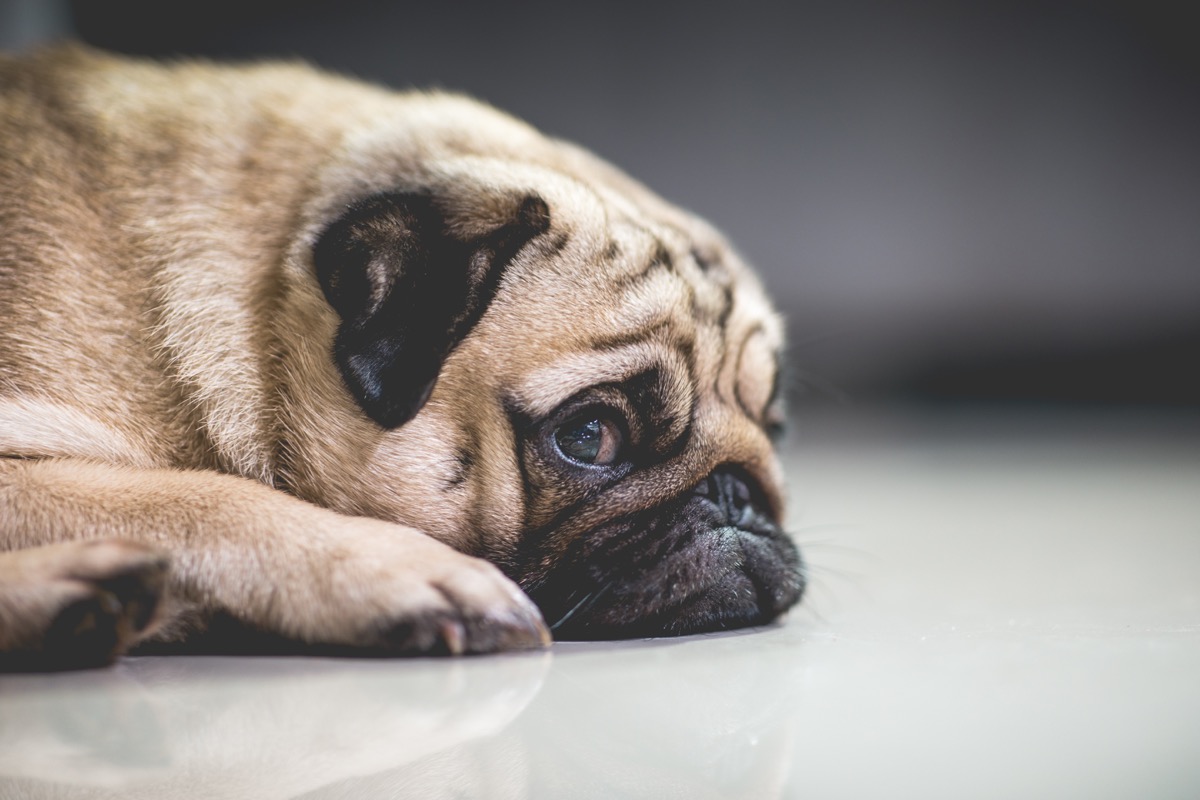
“Even the friendliest of pets can become overwhelmed and stressed by too many houseguests,” says Mantilla. “If your holiday season includes multiple parties in your home and overnight guests, it’s best to make a space that’s only for your pet.”
Mantilla adds that this is particularly true when children, who don’t necessarily respect your pet’s personal space, are among your visitors.
6
Christmas trees and their water
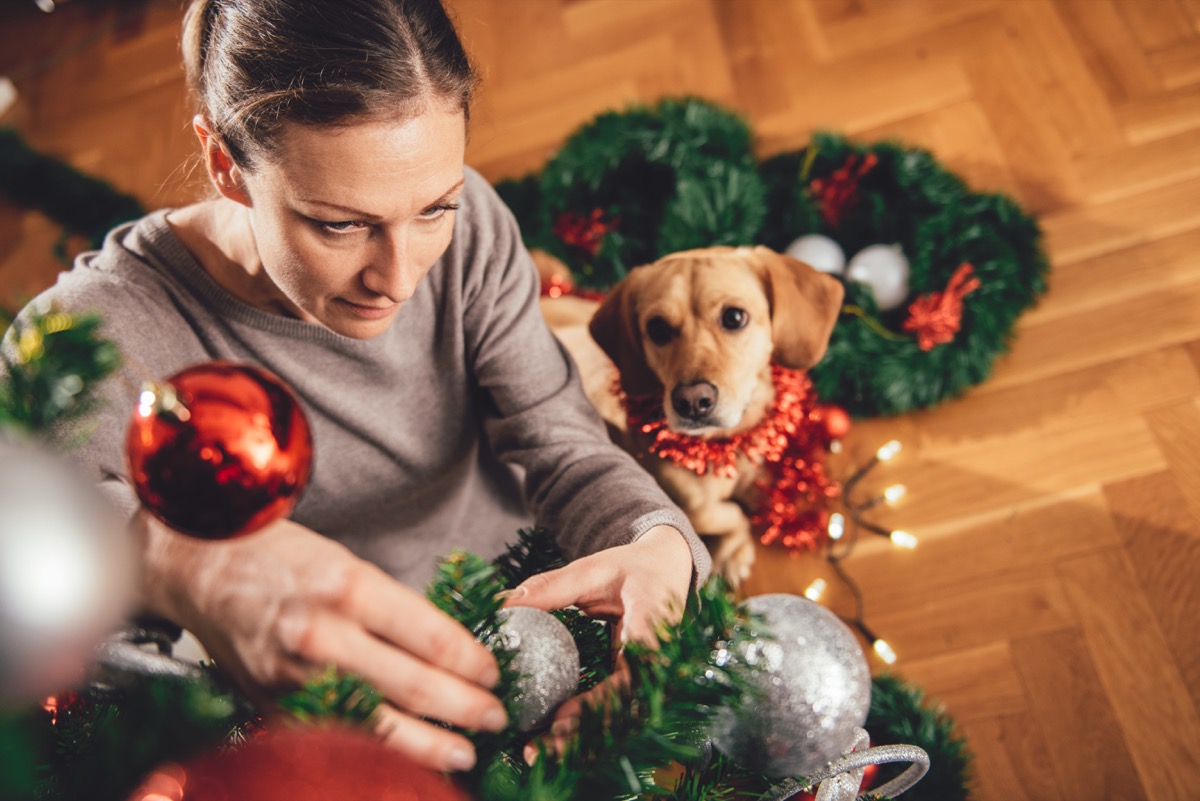
That Christmas tree may look like a festive holiday centerpiece to you, but it can look like lunch to dogs and cats. And unfortunately, trees like fir, scotch, and pine are mildly toxic to animals. Their oils can cause pets’ mouths and stomachs to become irritated since they’re so hard to digest. Plus, mouthfuls of needles can lead to vomiting or can obstruct—or even puncture—the animals’ airways. A mild gnaw of some low-hanging needles probably won’t do them any harm, but be sure they aren’t over-indulging.
An added reason Christmas trees can be dangerous for pets? Animals don’t just eat them, they may accidentally drink their water. “If the tree has fertilizers and/or preservatives in it and your pet drinks it, stomach upsets usually occur,” says Carol Osborne, DVM, an integrative veterinarian who runs Chagrin Falls Pet Clinic. “Stagnant water is a great breeding ground for bacteria, and if pets drink it, they often become ill with vomiting and/or diarrhea.”
7
Christmas tree lights
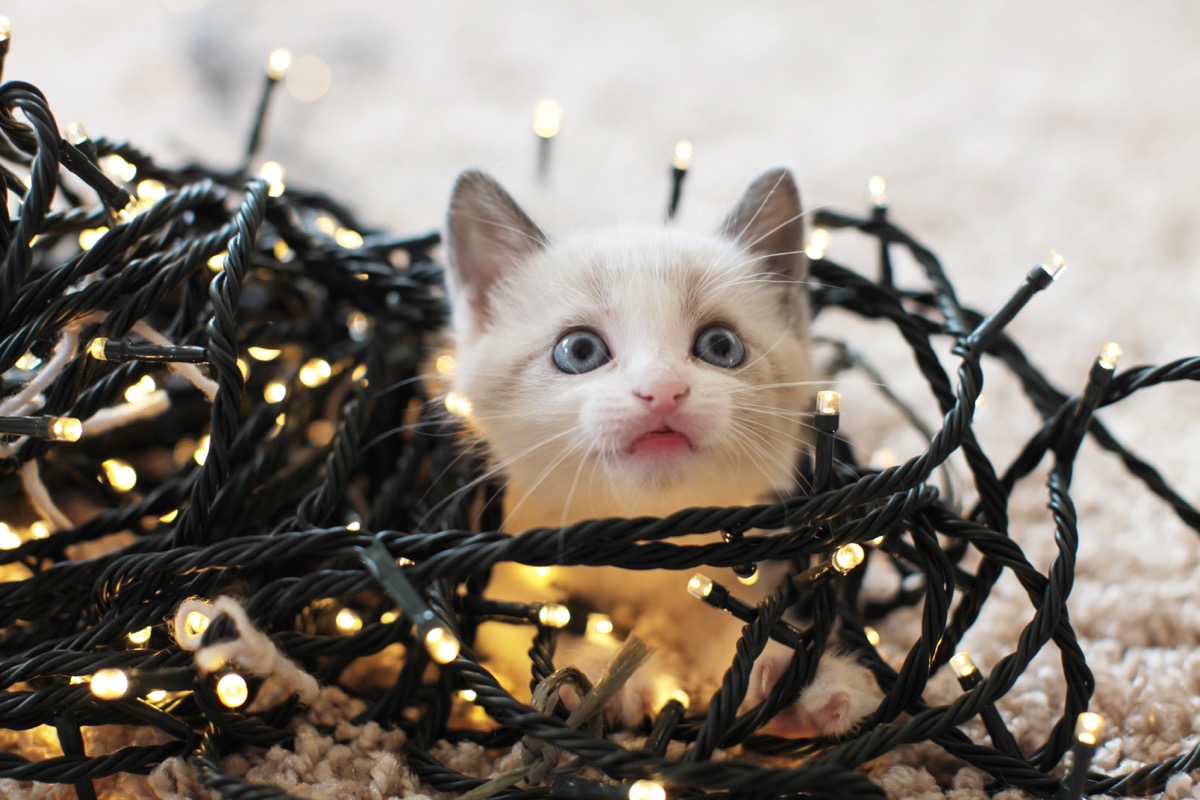
Electric lights are certainly a much safer alternative to the candles we used to use to decorate Christmas trees, but they can present plenty of dangers for pets, who have a habit of gnawing or clawing anything in sight. Be sure these strings of illumination are kept well above where your pet can get at them and that you turn them off before bedtime to avoid any late-night accidents.
“The twinkle may attract the pet and biting through the wires, they can get a shock,” says Yvette Berke, head of outreach for animal adoption organization the Little Angels Project. “Another concern are pets that might chew on wires and leave exposed areas that can spark a fire. Always check before you light.”
8
Gift wrap
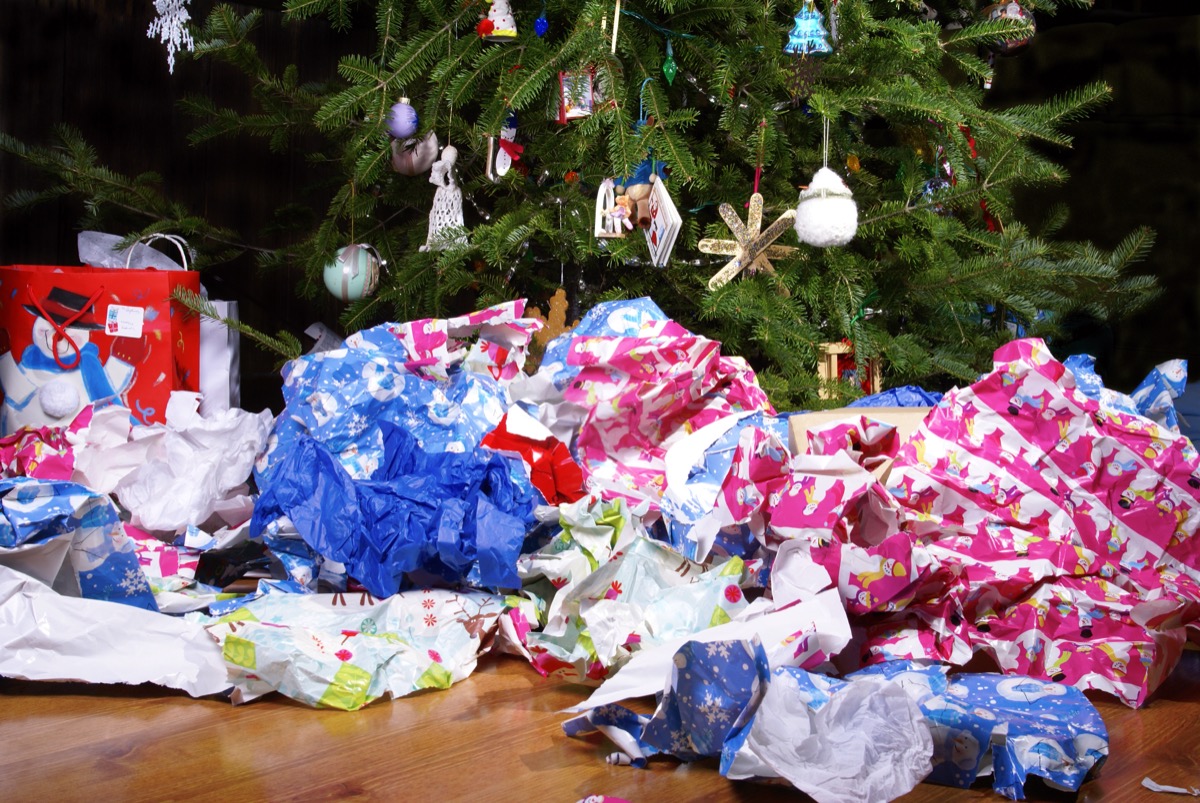
While you might nonchalantly toss the ribbon and wrapping paper to the side when you open your gifts, they’re a prime play toy for your cat or dog. They may love jumping at the ribbon or fighting with paper, but be careful that the ribbon doesn’t get knotted around their neck or paws and that they don’t try to swallow the wrapping material either. Simply put, “wrapping poses a choking hazard and could also cause an intestinal obstruction,” says Boicelli.
9
Tinsel
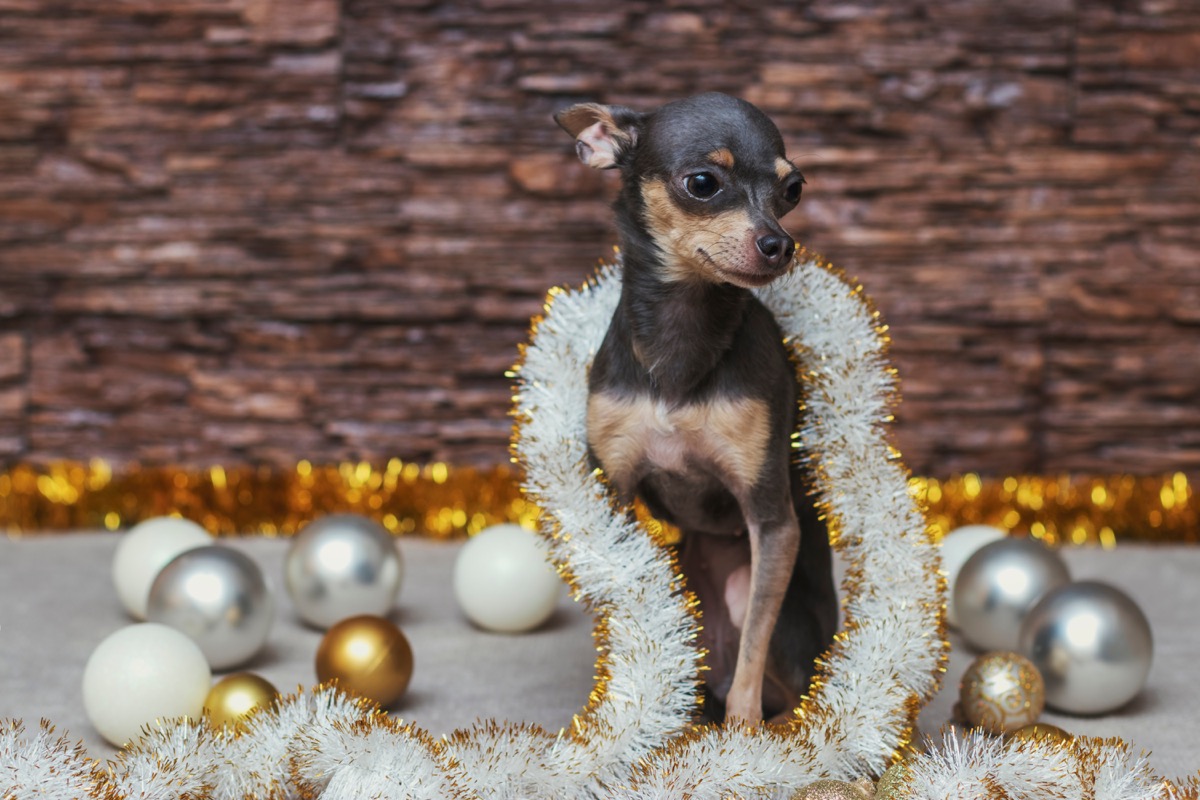
These classic holiday decorations themselves are not toxic to animals, but they can present plenty of dangers if ingested. Even more than gift-wrap ribbons, these little strips can be tempting morsels for cats and dogs—and can cause significant damage to their internal organs if digested.
“Tinsel looks like a fun, festive play toy to a cat,” Rachel Barrack, DVM, founder of Animal Acupuncture in New York City, previously told Best Life, But, “if ingested, it can result in a foreign body obstruction to the gastrointestinal tract requiring surgical intervention.”
10
Ornaments
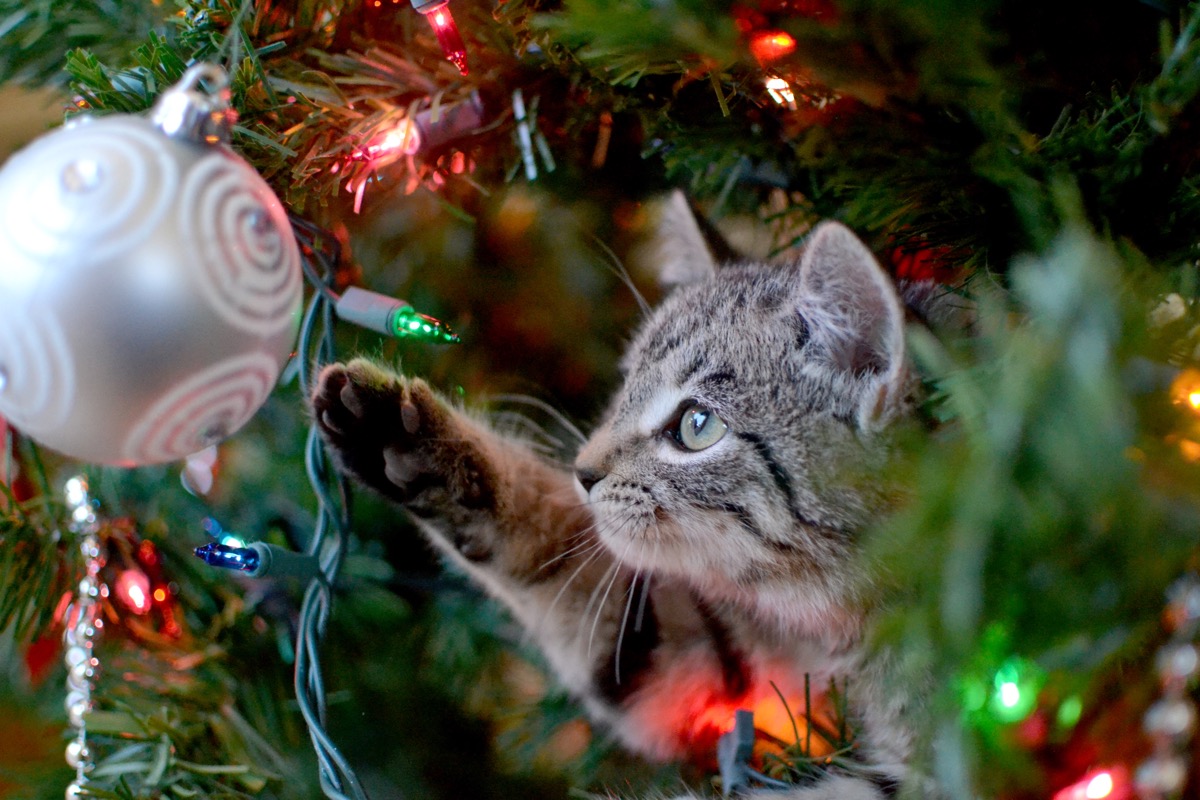
Tinsel’s not the only troublesome tree decoration. Glass ornaments or others with sharp edges can cut an animal if broken or in too close contact, and small ornaments that can be swallowed whole can be choking hazards.
“Try using cardboard, plastic, dried nontoxic flowers, fabric, wood, and pinecones,” suggests Osborne. She also urges using red velvet bows instead of hooks to hang ornaments and keeping any of those up high on the tree either way.
11
Christmas plants
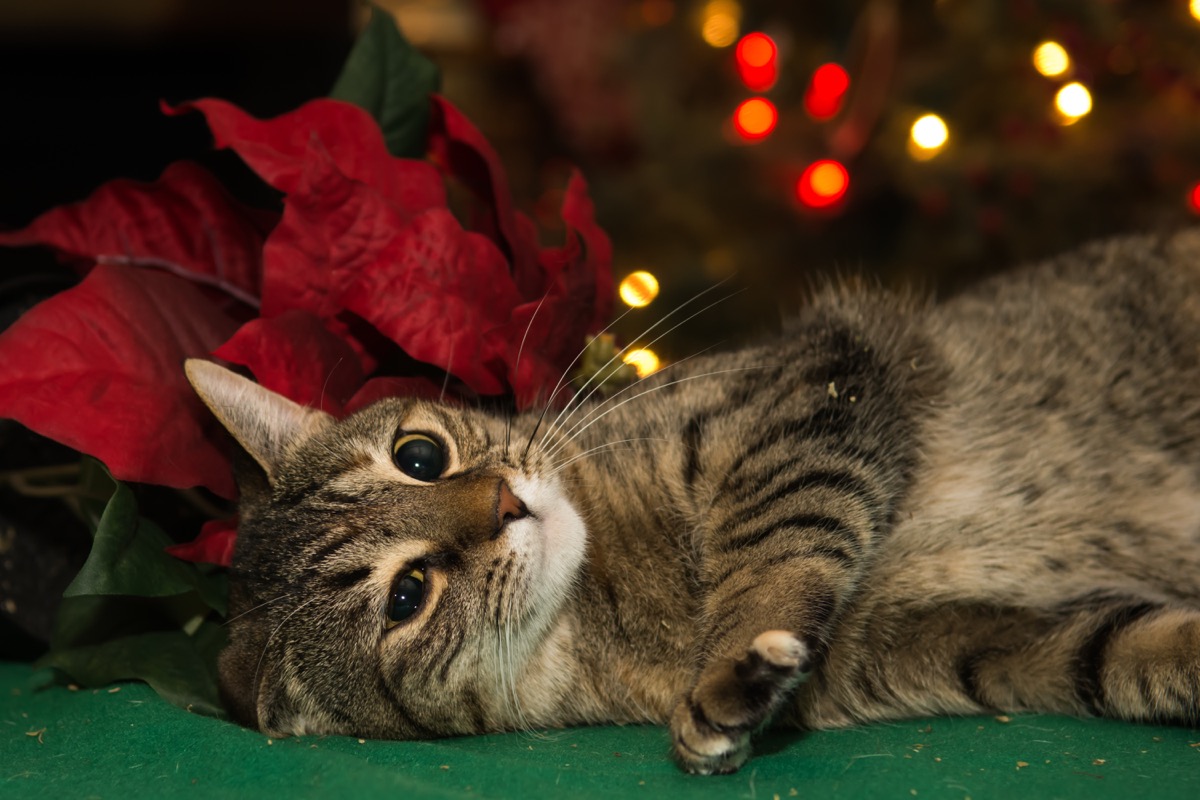
While evergreens and poinsettias may cause some general irritation for your furry friends, there are far more alarming forms of flora in your home. Before you hang that holly or mistletoe, think twice about whether it’s in your pet’s best interest.
“Holly can cause vomiting, diarrhea, nausea, and lethargy,” says Osborne. Holly presents an added danger since, even when set well out of reach of your pet, the berries dry over time and may fall off the branches onto the floor, where they can be easily eaten by other omnivorous animals. If you want fresh holly to decorate your home, play it safe and remove the berries before you put it up.
Mistletoe similarly can cause vomiting, diarrhea, and difficulty breathing in both dogs and cats—”especially the berries are quite toxic,” says Osborne. “They may lead to an upset stomach and fatal heart problems in dogs and cats.”
12
Batteries
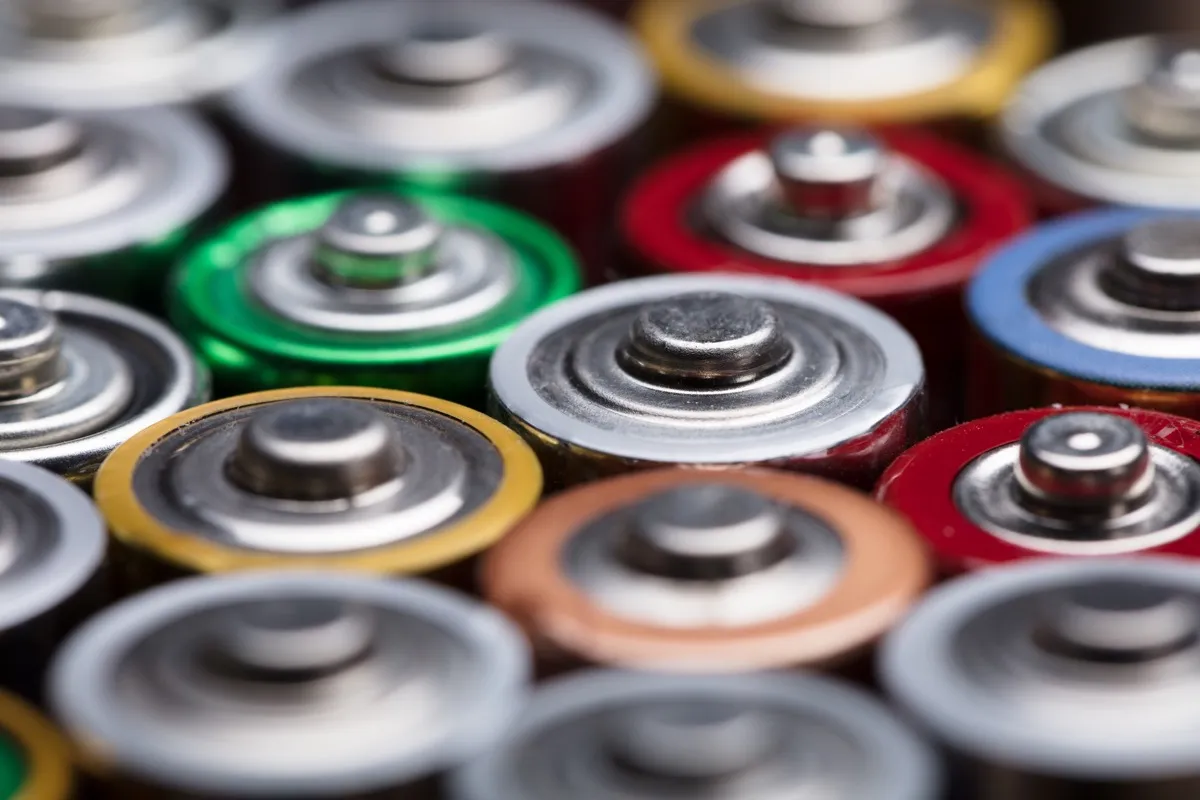
Whether you’re trying to figure out why the remote isn’t working or you want to get a new Christmas toy moving, families often break out batteries during the holidays—which can be trouble for pets.
“Toxicity levels can be moderate to severe and if they are swallowed may lead to full-on surgery,” according to the pros at Rover. “If your dog chews on batteries he finds lost in piles of wrapping paper, contact your veterinary professional. Battery acid can burn an animal’s esophagus and lithium can cause corrosive injury.”
13
Fire

There’s little that more effectively conjures up the holiday spirit than some mood lighting, whether that means lighting candles, a menorah, or a yule log in the fireplace. While you probably exercise caution when setting out such fiery decorations, you might put out more than usual at this time of year or keep that fire burning longer than you might otherwise. Next thing you know, your cat or dog has rubbed up a bit too close and knocked a candle down, nudged something into the fire, or even gotten a spark in their own fur.
“Candles and menorahs are fragrant and enticing to pets,” says Osborne. “Place them up high out of paw reach. They are a fire hazard and the fumes are toxic to birds. Wagging tails easily knock over candles and may burn your pet or worse yet start a fire.”
She also urges investing in a fireplace screen (especially for cats, who can occasionally use the fireplace as a litter box).
14
Escapes
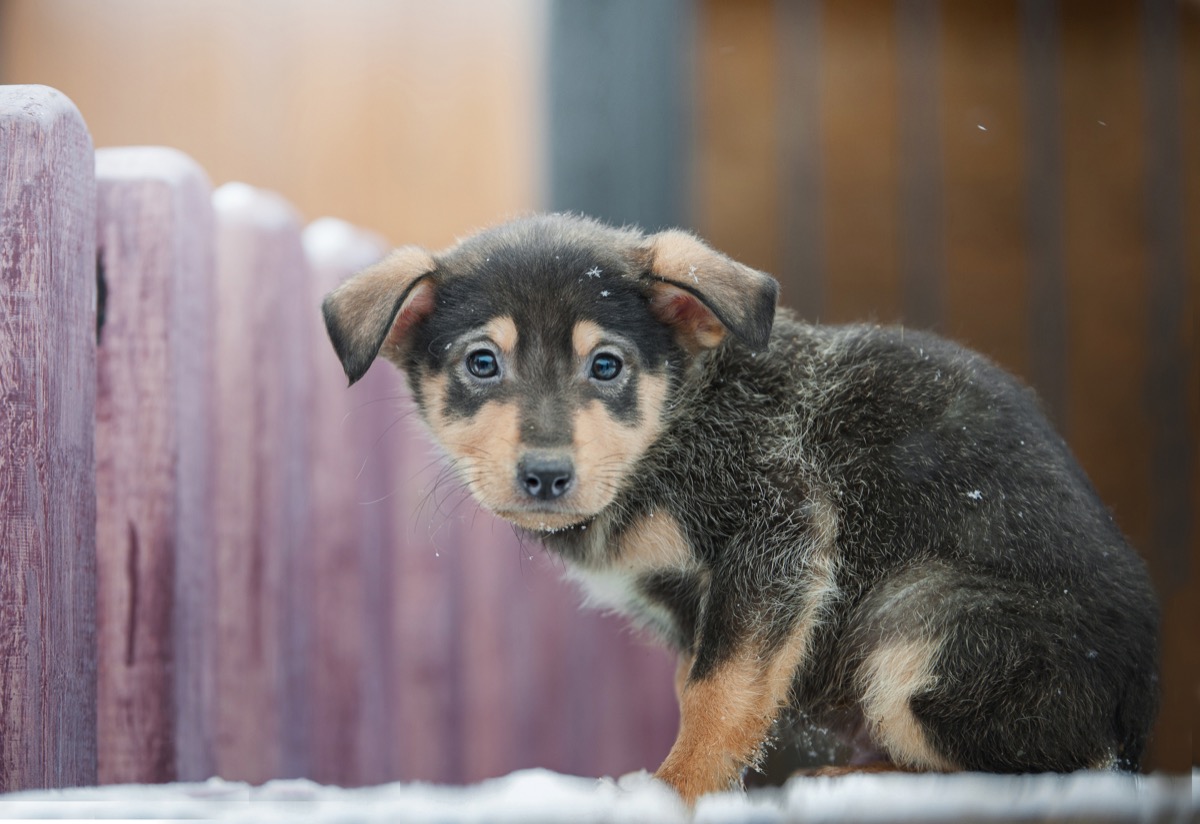
The disruptions of the holidays can create ample opportunities for pets to escape or end up lost, says Terri Jay, an animal medium, who notes her phone rings off the hook during the holidays.
“When people go on vacations, they often choose to either board their pets or have a pet sitter come in,” she says. “While we like to think that these can be safe solutions, they often are not. Pets do escape from boarding facilities due to carelessness and negligence and way too many pet sitters don’t take their responsibilities seriously enough.”
If an animal is used to being indoors and suddenly finds itself outdoors, it not only has the elements to contend with, but all the other dangers of the outside world. “Even taking your pet with you can pose problems if the pet gets away and doesn’t know where home is,” adds Jay. “Make sure pets are always wearing identification and are micro-chipped.”